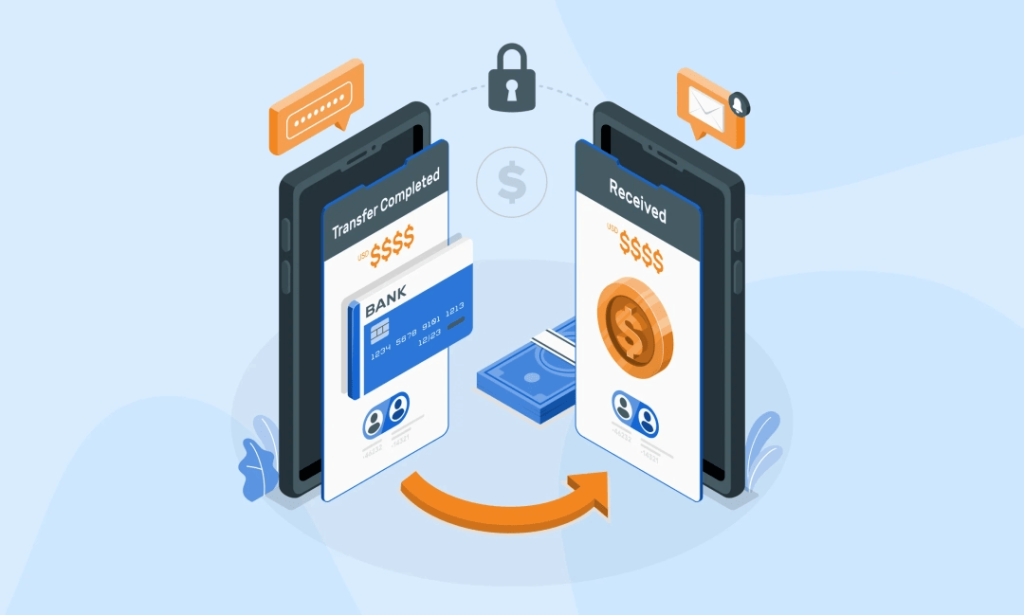E-wallets have become an increasingly popular way for consumers to store money and make digital payments. For businesses, e-wallets provide a fast, convenient payment method that can lead to higher conversion rates and customer satisfaction.
However, with the benefits come potential risks, as e-wallets can also be a target for fraud and cybercrime. Fortunately, there are steps businesses can take to ensure their e-wallet transactions are secure for both their business and their customers.
In this comprehensive article, we’ll explore the security risks associated with e-wallets and how to mitigate them through technical safeguards, operational policies, customer education, and building trust. By taking a layered approach to security, you can confidently offer e-wallet services to your customers while protecting sensitive user data and transactions.
Understanding the Security Risks of E-Wallets
Before diving into ewallet solutions, it’s important to understand the primary security concerns and threats facing e-wallet platforms:
Hacking and Data Breaches
Like any digital platform that stores sensitive user information, e-wallets are vulnerable to hacking, phishing scams, and data breaches. Hackers are always looking for weaknesses in code, unpatched software vulnerabilities, and other avenues to penetrate networks and systems.
Once inside, they can steal user credentials, transfer funds, or exploit vulnerabilities to gain control of servers. A serious breach could expose customers’ financial information, names, addresses, account numbers and transaction details. Both the e-wallet provider and users suffer damages.
Transaction Fraud
Criminals can gain access to legitimate e-wallet accounts to make unauthorized transactions, transfers or purchases. There are a few common ways fraudsters take over accounts:
– Phishing: Deceiving users into entering their account credentials on fake login pages.
– SIM swapping: Porting the victim’s phone number to a SIM card controlled by the criminal.
– Credential stuffing: Trying compromised username/password combos stolen from other sites.
– Keylogging malware: Recording keystrokes to capture usernames and passwords.
– Accessing stolen accounts: Buying compromised e-wallet accounts on the dark web.
Once logged into accounts, criminals can quickly initiate transfers or purchases. The rightful account owner is often unaware until noticing suspicious transactions or money missing.
Lack of Customer Security Awareness
Many e-wallet users don’t take proper precautions when it comes to account security. Poor security habits such as reusing passwords across sites, using simple passwords, not enabling two-factor authentication, and falling for phishing scams make customers more vulnerable to account takeovers and fraudulent transactions.
E-wallet providers face the difficult task of having to secure transactions even when their customers engage in risky behavior. While technical controls are crucial, educating customers is equally important to improving baseline security.
Third-Party Integration Risks
Most e-wallet platforms integrate with third-party services to enable different capabilities:
– Payment processors for funding sources
– Bank partnerships for transfers
– Data storage and analytics providers
– Fraud detection and identity services
– Customer service chatbots
– Marketing automation platforms
While these integrations provide key functions, they also expand the attack surface. If any integrated third-party has weak security controls, it exposes customer data flows to potential compromise. Rigorous partner vetting and access limitations are necessary to close third-party security gaps.
Best Practices for Securing E-Wallet Platforms
Protecting e-wallet platforms and transactions requires a defense-in-depth approach on multiple fronts. Here are some essential security best practices to cover key risks:
Strong Encryption Everywhere
Encryption should be ubiquitous across the e-wallet platform, including:
– Transport layer encryption (TLS 1. 2/1. 3) for all web and app sessions.
– Database encryption (AES-256 or stronger) for any stored customer personally identifiable information (PII).
– File encryption for archives and backups.
– Encrypting sensitive data in memory in case of a memory dump.
Rely on Multi-factor Authentication
MFA adds critical secondary protection to user login sessions. It requires the user to validate their identity through an additional factor such as:
– SMS text message or app verification code
– Biometric authentication like fingerprint or face scan
– Hardware keys like Yubikey
– Security questions
With MFA enabled, a password alone is not sufficient for a criminal to access accounts. MFA stops many automated credential stuffing and account takeover attempts in their tracks.
Implement AI Fraud Prevention
Leverage artificial intelligence and machine learning algorithms specifically designed to detect digital fraud and block suspicious transactions in real time.
Capabilities of a robust AI fraud solution include:
– Recognizing known fraudulent behaviors based on global data
– Spotting anomalies and outliers from normal usage patterns
– Adapting to new fraud tactics based on machine learning
– Assigning risk scores to users and transactions
– Automating responses like stepping up authentication requirements or freezing funds
Educate Customers on Security Best Practices
Make basic security awareness part of your customer onboarding process and ongoing communications. Educate customers on risks like phishing and strong password policies. Ensure they know how to:
– Create unique and complex passwords for their e-wallet account
– Recognize phishing attempts in email, texts and calls.
– Use your MFA options for greater protection
– Never share account credentials or codes
– Monitor transaction activity and report anything suspicious
Empowered customers who take an active role in security provide a hugely valuable defense layer.
Send Transaction Notifications
Send instant push or SMS notifications any time an important account action occurs, such as:
– Login attempts
– Password changes
– Adding new payment sources
– Initiations of transfers or withdrawals
Screen Employees and Partners
Conduct background checks on employees during hiring, especially for sensitive roles like customer service, finance and IT/development. Screen for any red flags that could indicate insider threat risks.
Likewise vet any external partners that integrate with your e-wallet platform. Ensure partners meet your security standards through questionnaires, certifications, audit results and contract clauses. Limit their access to only essential customer data flows.
Isolate and Restrict Access
Only provide employees and partners the minimum access needed to fulfill their duties. Segregate privileges and implement controls like:
– Role-based access tiers
– Multiple approvals for data access or transfers
– Job rotation and mandatory vacations
– Disabling access immediately after terminations
– Monitoring and logging all admin actions
– Securing and auditing operational databases
– Disabling USB drives
Perform Ongoing Security Evaluations
Continuously assess your people, processes and technology for risks and vulnerabilities. Initiatives should include:
– Penetration tests by white hat hackers
– Source code audits and bug bounties
– Security control assessments
– Business continuity and incident response testing
– Policy and compliance reviews
– Culture surveys to measure employee security mindset
Making Security Part of Daily Business Operations
Beyond platform-level protections, integrating security into business operations is equally crucial:
Make Employee Cybersecurity Training Mandatory
Establish mandatory cybersecurity and fraud awareness education for all employees. Training should cover expected behaviors for:
– Handling sensitive data
– Securing workstations
– Creating strong passwords and using password managers
– Identifying social engineering and phishing lures
– Internal reporting procedures for suspected fraud
– Safe internet usage guidelines
Codify Security Responsibilities for Key Roles
Document security expectations and procedures for roles like:
– Security officers and analysts
– Application developers
– IT infrastructure managers
– HR and recruiting
– Finance and accounting
– Customer service agents
– Executive leadership
Perform Ongoing Vendor Assessments
Continuously evaluate the security of any vendors that handle your customer data, such as:
– Payment processors
– Cloud infrastructure provider
– Banking partners
– Marketing platforms
– Analytics services
Prepare Incident Response Plans
Put detailed response plans in place for scenarios like data breaches, system outages, insider threats, natural disasters, and fraud waves.
Response plans and incident management teams accelerate reaction times and limit damages when incidents inevitably occur. Perform periodic incident response testing and refresh plans annually.
Insure Against Cyber Incidents
Explore specialized cyber insurance to help offset costs from major incidents like data breaches. Policies can cover expenses for customer notification, legal counsel, forensic investigations, PR, and credit monitoring services for impacted customers.
Monitor Transactions in Real-Time
Leverage transaction monitoring systems to watch for suspicious behaviors and anomalies in real time. Recognizing fraud early limits financial losses.
Enable Internal Whistleblowing Programs
Let employees anonymously report potential insider fraud or misconduct without fear of retaliation. Provide clear escalation procedures and whistleblower protections.
Also Read – Future of E-Wallet transactions with NFC and QR code payments
Achieving Customer Trust and Loyalty with Security
Making security central to the customer experience is equally important as the technical controls. Customers need to trust your e-wallet to entrust it with their money and information. You can nurture trust by being transparent about your security approach:
Communicate What You Do to Protect Customers
Explain the layers of protection you provide, such as fraud monitoring, data encryption, and requiring strong MFA. Feature your security principles and safeguards prominently on your website and in your app.
Adhere to Data Protection Regulations
Comply fully with data protection laws like Europe’s GDPR. Only collect necessary data, be transparent about usage, honor data rights requests, and report any breaches.
Offer Assistance if Fraud Does Occur
Guarantee refunds for any validated cases of unauthorized transactions or fraudulent purchases. Provide clear help resources for customers to report suspicious activities.
Tell Customers What They Can Do
Educate customers on basic precautions they should take for account security and signs of potential fraud. Empower them to take an active role in protection.
Share Real Customer Fraud Stories (with Permission)
With customer permission, publish testimonials of how your fraud monitoring caught or stopped real criminal attempts. Proving your defenses work builds confidence.
Survey Customers Regularly
Solicit customer feedback through surveys and focus groups about how you can better safeguard their data and transactions. Implement top suggestions.
Hire Independent Audits
Commission respected third-party auditors to evaluate the effectiveness of your controls and publish certification reports. Auditor validation signals you have nothing to hide.
Follow Best Practices from Leaders
Study and emulate other highly regarded e-wallet and fintech providers setting the standard on security. Follow industry best practices and guidance from regulators.
Respond Supportively to Any Incidents
If a breach does occur, communicate compassionately with customers on how you’re responding and improving controls to prevent future recurrence. Support victims through the difficult aftermath. Handled properly, trust can be regained over time.
Conclusion
As e-wallets become more integral to how consumers pay and manage finances digitally, providing robust security is equally crucial to driving adoption and loyalty. By taking a layered “defense-in-depth” strategy across technology, operations, employee culture and customer experience, businesses can confidently harness the opportunities of e-wallets while protecting account holders.
Digipay is a fintech platform that provides cashless banking, online payments, virtual cards, and digital financial solutions.
DigiPay.Guru is a globally recognized fintech solution provider that offers advanced digital payment solutions to banks, fintechs, financial institutions, NBFCs, and businesses. Our comprehensive suite called DG Bank provides products and services such as Mobile Money, Agency Banking, International Remittance, eKYC, Prepaid Cards, Merchant Acquiring, and Scan & Thru.
We help businesses design solutions to revolutionize financial markets by building mature, flexible, customizable, and future-proof digital platforms. Our solutions are available in both “License Version” and “SaaS Model”.



